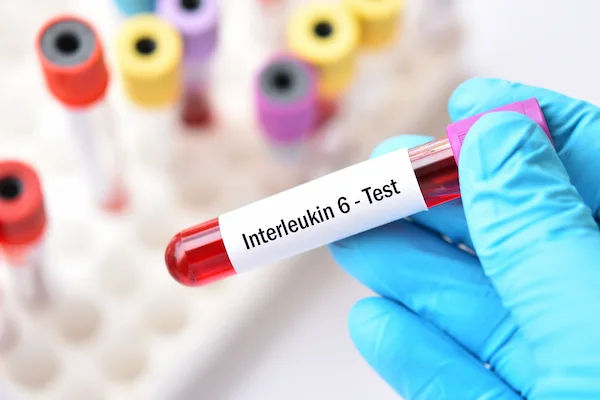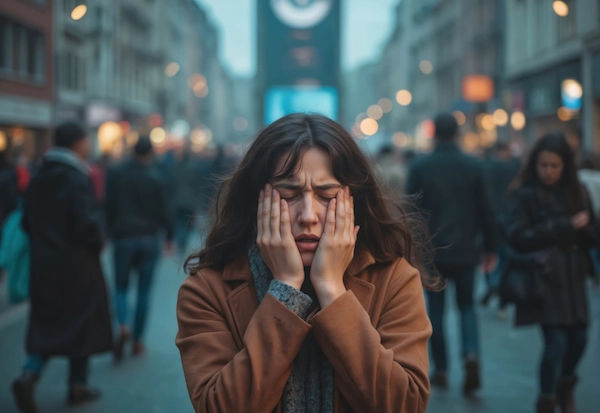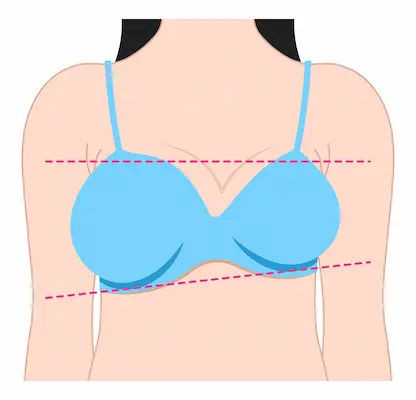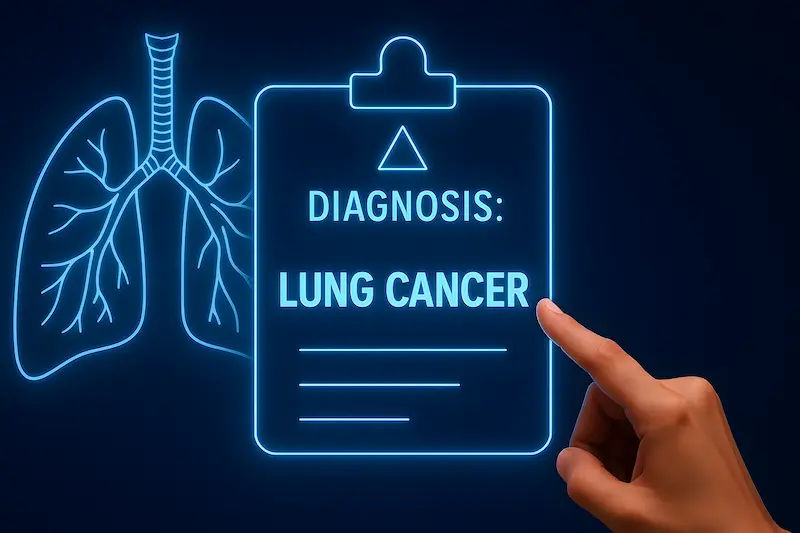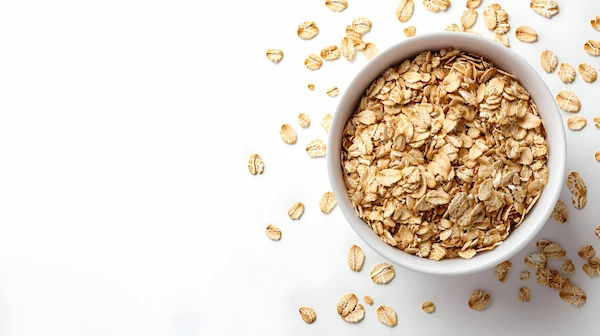Guide to Common Summer Illnesses in Children
Know about the common summer illnesses of children, mosquito-borne infections, water, and soil infections. Stomach bugs, why children fall sick, skin and eye infections, prevention, treatment options and more.

Written by Dr. Dhankecha Mayank Dineshbhai
Reviewed by Dr. Vasanthasree Nair MBBS
Last updated on 22nd Oct, 2025

Introduction
Summer brings school breaks, outdoor play, camps, travel, and a spike in paediatric/common summer illnesses in children. Heat, humidity, changes in diet, and more time in pools and parks can trigger dehydration, sunburn, diarrhoea, swimmer’s ear, rashes, and mosquito-borne infections like dengue or malaria in many regions. This practical guide explains why summer raises risk, how to spot symptoms early, and what to do at home versus when to see a doctor. You’ll find prevention checklists, first-aid advice, and evidence-based tips for food safety, sun protection, safe swimming, and mosquito bite prevention. If symptoms persist beyond two weeks or your child looks very unwell at any time, consult a doctor online with Apollo24|7 for further evaluation.
Consult a Top Paediatrician for Personalised Advice
Why Kids Get Sick More in Summer
Children lose fluids faster than adults, have a higher surface-area-to-weight ratio, and rely on adults to regulate their environment, making them more vulnerable to heat-related problems. Hotter temperatures and humidity reduce sweat evaporation, impair cooling, and increase dehydration risk. Meanwhile, summer routines introduce new exposures: more time outdoors, shared pools, travel, camps, and often a shift toward street foods and cold drinks that may be unsafe. In India and many tropical regions, the pre-monsoon heat followed by rains brings more mosquitoes, elevating the risk of dengue, malaria, and chikungunya. Pools and water parks can spread recreational water illnesses if chlorination is suboptimal. Lastly, summer means tighter schedules and long car rides or bus trips that create “microclimates”, hot interiors where heat builds quickly.
Heat and Dehydration: Recognise, Treat, Prevent
Heat conditions progress along a spectrum. Dehydration presents with thirst, dry lips, reduced urine (dark yellow), lethargy, and, in infants, a dry mouth or fewer wet diapers. Heat exhaustion adds heavy sweating, clammy skin, headache, dizziness, nausea, and irritability. Heat stroke is a medical emergency: very high body temperature, hot/dry or profusely sweaty skin, confusion, seizures, or loss of consciousness. Children are at particular risk during midday play, sports practice, long bus rides without ventilation, or time spent in hot cars, even for “just a few minutes
Home care:
- Move the child to shade/air-conditioning.
- Offer small, frequent sips of oral rehydration solution (ORS) or a balanced electrolyte drink.
- Homemade ORS: mix 6 level teaspoons of sugar + 1/2 level teaspoon of salt in 1 litre of clean water; stir well. For toddlers, aim for a few sips every 5–10 minutes and increase as tolerated.
- Cool the body: loosen clothing, use cool wet cloths on neck/armpits/groin, or a lukewarm bath.
- Avoid ice-cold immersion in young children unless directed.
- Rest until fully recovered; avoid returning to sports the same day.
Red flags:
persistent vomiting preventing fluid intake, no urine for 6–8 hours, very drowsy or confused, temperature ≥40°C, seizures, or fainting, seek urgent care.
Prevention:
- Hydration schedule: 120–240 ml every 20–30 minutes during active play; more in very hot conditions.
- Shade and timing: Avoid peak sun (11 am–4 pm). Schedule outdoor sports early morning or late evening.
- Clothing: light-colored, breathable fabrics; wide-brim hats.
- Never leave a child in a parked car, even with windows cracked.
If symptoms persist beyond two days or your child isn’t improving with fluids and rest, consult a paediatrician.
Stomach Bugs and Food-/Water-borne Illness
In summer, bacteria multiply faster in food left unrefrigerated, and kids often consume street foods, raw salads, or ice made from unfiltered water. Acute gastroenteritis typically causes sudden diarrhoea, vomiting, abdominal cramps, and low-grade fever. Most cases are viral and self-limited; however, bacterial causes are more common in hot months and may involve blood/mucus in stools or higher fever. “Summer diarrhoea in toddlers” often follows shared treats at parties, travel, or pool days.
Home care:
Focus on hydration: ORS is first-line; continue breastfeeding/regular milk unless advised otherwise.
Offer small, frequent sips; use a spoon or syringe for younger kids. Resume light foods early:
- banana, rice, applesauce, toast, yoghurt, dal-khichdi, idli, or plain roti.
- Avoid fruit juices/fizzy drinks (can worsen diarrhoea), and fatty or very spicy foods.
Food safety for hot weather:
- The 2-hour rule: refrigerate perishable foods within 2 hours (1 hour if >32°C/90°F).
- Reheat leftovers to steaming hot; be cautious with cut fruits, salads, mayonnaise, and milk-based sweets left out.
- Use safe water for drinking and ice; prefer freshly cooked hot foods when eating out.
- Clean hands before meals; teach kids to use sanitiser before snacking.
When tests help:
If diarrhoea lasts >7 days, blood in stool, or high fever, a stool culture can identify bacterial causes.
Prolonged vomiting, lethargy, or signs of dehydration warrant electrolytes and clinical review.
If your child has persistent diarrhoea beyond a week or repeated fevers, book a consultation with Apollo24|7. Apollo24|7 offers convenient home collection for tests like stool culture and electrolytes. Long-tail keywords: summer diarrhoea in toddlers; safe summer foods for children. Sources: WHO diarrhoeal disease overview [general background], food safety best practices.
Mosquito-Borne Illnesses (Dengue, Malaria, Chikungunya)
In many Indian cities, mosquito populations rise in pre-monsoon and monsoon seasons, raising the risk of dengue (Aedes mosquitoes bite during daytime), malaria (Anopheles bite at night), and chikungunya. Early dengue symptoms include sudden high fever, severe headache, pain behind the eyes, muscle/joint pains, nausea, and rash. Warning signs often appear around days 3–7: persistent vomiting, abdominal pain, bleeding gums, lethargy, or rapid drop in platelets [1]. Malaria may cause fever with chills/sweats, headache, and body aches; patterns can vary by species.
Testing windows:
Dengue NS1 antigen is useful in early illness (day 1–5). CBC helps monitor platelet count and haematocrit. IgM is more useful after day 5.
Malaria diagnosis uses peripheral smear (thick and thin films) or rapid diagnostic tests; repeat testing may be required if suspicion remains high despite a negative test.
Home and community prevention:
- Eliminate standing water weekly (planter trays, coolers, buckets, tyres).
- Use window screens, bed nets (especially at night), and repellents with DEET or picaridin as per age recommendations.
- Dress children in long sleeves and light-coloured clothing when mosquitoes are active.
- Community clean-ups before the monsoon reduce breeding.
When to seek urgent care: persistent high fever, severe abdominal pain, bleeding, black stools, confusion, inability to drink, or a child who looks very unwell. If your child has a high fever beyond 48 hours in mosquito season, consult a doctor online with Apollo24|7; home collection is available for dengue NS1/CBC and malaria testing. Long-tail keywords: dengue symptoms in children in India; malaria prevention for kids. Sources: WHO dengue fact sheet [1]; NVBDCP (India) guidance.
Skin and Eye Troubles in Summer
Sunburn, prickly heat (miliaria), and skin infections surge with heat and sweat. Sunburn presents with red, painful skin; severe cases may blister and cause fever. Children’s skin is thinner and more susceptible to UV damage; consistent sun protection is crucial [4]. Prickly heat shows as tiny, itchy red bumps in sweat-prone areas (neck, chest, back). Fungal infections (tinea) thrive in damp clothes and shoes, while bacterial infections like impetigo appear as crusted sores, often around the nose and mouth. Insect bites can lead to local reactions or secondary infection from scratching.
Eye problems:
- Conjunctivitis (“pink eye”) leads to redness, tearing, discharge, and gritty sensation. Viral forms are common and self-limited; bacterial cases often produce thicker discharge and may need drops. Allergic conjunctivitis causes itching and stringy mucus [CDC].
- Styes (hordeola) are localized tender lumps on the eyelid margin.
Care and prevention:
- Sun protection: the 4S—Shade, Shirt (long-sleeved UPF/rash-guard), SPF 30+ broad-spectrum sunscreen, and Sunglasses (UV400).
- Keep folds dry; change sweaty clothes quickly; choose breathable cotton.
- For prickly heat: cool showers, light clothing, calamine; avoid heavy ointments that block pores.
- For fungal rashes, keep the area dry; see a doctor for antifungal treatment if persistent.
- For conjunctivitis: warm compresses, avoid touching eyes, don’t share towels. Seek care if severe pain, light sensitivity, or vision changes.
If eye redness or discharge persists beyond 2–3 days, or there’s pain or blurred vision, book an appointment with Apollo24|7. Long-tail keywords: prickly heat rash treatment for baby; conjunctivitis in child during summer. Sources: AAP sun safety [4]; CDC conjunctivitis guidance.
Water and Outdoor Infections
Swimming pools and water parks can spread recreational water illnesses (RWIs) like diarrhoeal bugs if chlorine levels are suboptimal, and ear canals can develop otitis externa (“swimmer’s ear”) after frequent immersion. Swimmer’s ear usually causes ear pain, itching, and tenderness when pulling the outer ear; lying on the ear can be uncomfortable. Hearing may be muffled; fever is uncommon. Early treatment prevents complications [5]. Children also sustain cuts and scrapes in outdoor play; in warm, humid conditions, minor wounds can become infected without proper cleaning.
Prevention:
- Pool hygiene: choose facilities with clear water and posted chlorine checks; shower before swimming; take kids on bathroom breaks; change diapers away from the pool; avoid swimming for at least 2 weeks after diarrhoea (some germs like Cryptosporidium resist chlorine) [3].
- Ear care: dry ears after swimming (tilt head, towel dry outer ear), avoid inserting cotton buds. For recurrent swimmer’s ear in older children, discuss acetic acid/alcohol drying drops with a doctor.
- Wound care: clean cuts promptly with running water, apply gentle soap, pat dry, and use a clean bandage. Watch for redness, swelling, pus, or fever.
When to see a doctor: persistent ear pain, discharge from the ear, spreading redness around a wound, or fever. If ear pain persists or your child seems very uncomfortable, consult a paediatrician with Apollo24|7. Long-tail keywords: swimmer’s ear treatment for children; water park illness prevention. Sources: CDC Healthy Swimming [3]; NHS otitis externa [5].
Prevention Playbook: Daily Routines, Checklists, and Myths
Daily routines that work:
- Hydration habit: pack a marked bottle showing hourly goals; teach kids to “sip before you’re thirsty.” Add fruit slices or ORS ice cubes for flavour and electrolytes on sport days.
- Heat-smart scheduling: active play before 10 am and after 5 pm; plan indoor, shaded, or water-play alternatives at midday.
- Food safety: pack insulated lunch boxes with ice packs; reheat leftovers to steaming; follow the 2-hour rule.
- Mosquito defense: apply child-safe repellent to exposed skin and clothing; renew every 4–6 hours; use nets at night in mosquito-dense areas.
- Sun and skin: 4S method—Shade, Shirt, SPF, Sunglasses; reapply sunscreen every 2 hours and after swimming.
Myths vs facts:
- Myth: “Cold drinks cause sore throat; avoid water.” Fact: Cool fluids reduce overheating and are encouraged; hygiene and volume matter more than temperature.
- Myth: “Sweating it out” treats fever. Fact: Overheating worsens dehydration; cool rest and fluids help.
- Myth: “Antibiotics cure most summer diarrhoea.” Fact: Most cases are viral; antibiotics are only for specific bacterial infections under medical advice.
- Myth: “Dark clouds mean low UV.” Fact: UV can be high on cloudy days; keep sunscreen on.
Home Care, Red Flags, and When to See a Doctor
Quick decision guide:
- Fever (≥38°C): Offer fluids, light clothing, and paracetamol as per weight if uncomfortable. Seek care urgently if lethargic, difficulty breathing, stiff neck, persistent vomiting, or fever >48 hours in mosquito season.
- Vomiting/diarrhoea: Start ORS immediately; small, frequent sips. Seek help if blood in stool, severe abdominal pain, signs of dehydration, or diarrhoea >7 days.
- Ear pain after swimming: Keep the ear dry; mild pain relievers. Seek care if persistent pain, discharge, or fever.
- Rash: For prickly heat, cool baths and light clothing; for spreading, painful, or blistering rashes, see a doctor.
Tests to consider:
- Dengue NS1 (day 1–5), CBC for platelets/haematocrit, malaria smear/rapid test for high fevers in endemic areas.
- Stool culture if blood in stools or prolonged diarrhoea; serum electrolytes for dehydration.
Ear swab rarely needed unless severe otitis externa.
Apollo24|7 offers convenient home collection for dengue NS1, CBC, malaria tests, and stool culture—helpful when your child is unwell at home. If your child’s condition does not improve after trying these methods, book a physical visit to a doctor with Apollo24|7.
Conclusion
Summer should be about play, not paediatric/common summer illness. Understanding how heat, humidity, travel, street foods, pools, and mosquitoes raise risk empowers you to prevent problems before they start. Anchor your routine with the 4S Shade, Shirt, SPF, Sip, add food safety habits, clean-water choices, and a weekly 10-minute mosquito check. For high fevers in mosquito season or persistent symptoms, early testing and professional guidance matter; Apollo24|7 offers convenient online consultations and home collection for common summer tests like dengue NS1, CBC, malaria, and stool culture. With a little planning and awareness, your family can enjoy the sunshine safely, reduce sick days, and make the most of holidays, sports, and travel. Keep this guide handy, share it with caregivers and camp leaders, and step into summer with confidence.
Consult a Top Paediatrician for Personalised Advice
Consult a Top Paediatrician for Personalised Advice

Dr. Shubhadeep Das
Paediatrician
17 Years • MBBS, MD (Paediatrics), FRCPCH (London), FRCP(Edinburgh), FRCP (London), EPIC Diploma, Fellowship in Paediatric Intensive care & Cardiac Intensive care (Canada and UK ).
Kolkata
Dr Shubhadeep Das's Child care clinic, Kolkata
(25+ Patients)

Dr. Debangana Chatterjee
Paediatrician
6 Years • MBBS, MD, DNB (Paed.)
Kolkata
MCR SUPER SPECIALITY POLY CLINIC & PATHOLOGY, Kolkata
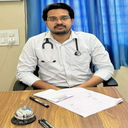
Dr. Anveez M A
Paediatrician
7 Years • MBBS, MD (Paed.)
Bansdroni
Siddhita Healthcare., Bansdroni

Dr. Suhena Sengupta
Paediatrician
15 Years • MBBS, IPPC
Kolkata
MCR SUPER SPECIALITY POLY CLINIC & PATHOLOGY, Kolkata
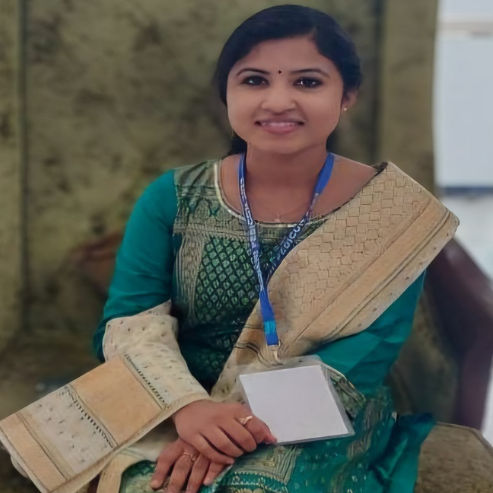
Dr. Maitreyee Mallick
Paediatrician
7 Years • MBBS, MD (Paed.)
Bansdroni
Siddhita Healthcare., Bansdroni
Consult a Top Paediatrician for Personalised Advice

Dr. Shubhadeep Das
Paediatrician
17 Years • MBBS, MD (Paediatrics), FRCPCH (London), FRCP(Edinburgh), FRCP (London), EPIC Diploma, Fellowship in Paediatric Intensive care & Cardiac Intensive care (Canada and UK ).
Kolkata
Dr Shubhadeep Das's Child care clinic, Kolkata
(25+ Patients)

Dr. Debangana Chatterjee
Paediatrician
6 Years • MBBS, MD, DNB (Paed.)
Kolkata
MCR SUPER SPECIALITY POLY CLINIC & PATHOLOGY, Kolkata

Dr. Anveez M A
Paediatrician
7 Years • MBBS, MD (Paed.)
Bansdroni
Siddhita Healthcare., Bansdroni

Dr. Suhena Sengupta
Paediatrician
15 Years • MBBS, IPPC
Kolkata
MCR SUPER SPECIALITY POLY CLINIC & PATHOLOGY, Kolkata

Dr. Maitreyee Mallick
Paediatrician
7 Years • MBBS, MD (Paed.)
Bansdroni
Siddhita Healthcare., Bansdroni
More articles from General Medical Consultation
Frequently Asked Questions
What are the most common summer illnesses in children?
Dehydration and heat exhaustion, gastroenteritis/diarrhoea, sunburn and prickly heat, swimmer’s ear, conjunctivitis, and mosquito-borne infections like dengue and malaria are the most common summer illnesses in children.
How can I prevent dehydration in kids during summer?
Offer small, frequent sips of water or ORS; schedule active play in cooler hours; pack a marked water bottle; choose breathable clothing; and teach kids to drink before they feel thirsty. Signs of heat exhaustion in children—dizziness, headache, nausea—mean stop activity and cool down.
When should I worry about a child’s summer fever?
Seek care urgently if there’s a persistent high fever beyond 48 hours, severe abdominal pain, bleeding, extreme lethargy, seizures, or if your child looks very unwell—especially during dengue/malaria season. Consider dengue NS1/CBC or malaria smear early in endemic regions.
How do I treat prickly heat rash in a baby?
Keep the baby cool and dry; use light cotton clothing; give cool baths; apply calamine lotion; avoid heavy ointments. If the rash is spreading, has pus, or the baby has a fever, see a doctor for evaluation. Search terms: prickly heat rash treatment for baby.
Is swimmer’s ear different from a middle ear infection?
Yes. Swimmer’s ear (otitis externa) is an outer ear canal infection causing pain when touching the outer ear; middle ear infections cause deeper ear pain, often after a cold. Dry the ears after swimming and seek care if pain or discharge persists. Keyword: swimmer’s ear treatment for children.
